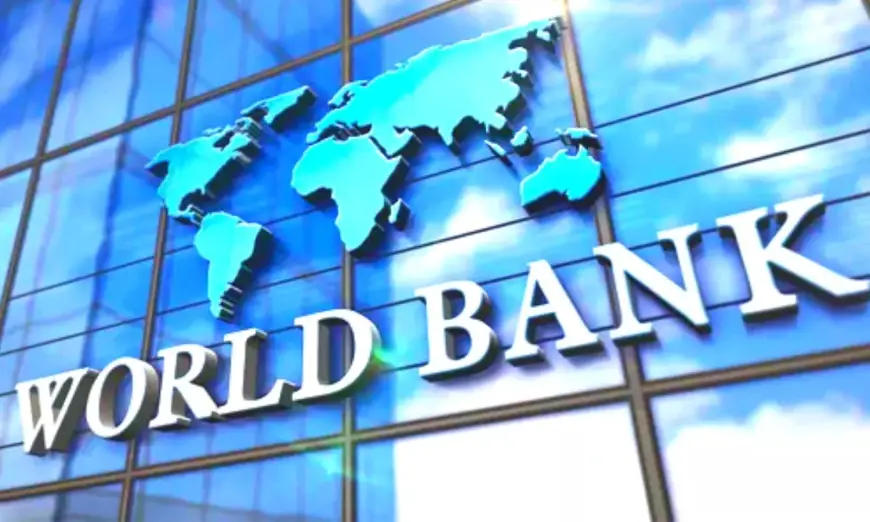World Bank Trims India’s FY 2026 Growth Forecast to 6.3%: What It Means for the Economy
The World Bank has revised India’s GDP growth projection for FY 2026 down to 6.3%, citing global economic uncertainty and domestic investment moderation.

India’s Economic Growth Slows: World Bank Revises FY 2026 Projection to 6.3%
In a significant update, the World Bank has revised India’s GDP growth forecast for FY 2026 down to 6.3%, from its earlier projection of 6.6%. The adjustment reflects a mix of global economic headwinds, moderation in domestic investment, and weaker-than-expected export performance.
The announcement was part of the World Bank’s latest Global Economic Prospects report, released on June 11, 2025. Despite the downgrade, India remains the fastest-growing major economy in the world, well ahead of global growth averages.
Full report: World Bank Global Economic Prospects June 2025
Why the Forecast Was Trimmed: Key Factors Explained
According to the report, several macroeconomic and structural factors are contributing to the slower pace of expansion:
-
Global Trade Headwinds:
A prolonged slowdown in advanced economies, along with geopolitical tensions in Europe and the Middle East, is affecting global trade flows. India’s export sector—particularly IT services, textiles, and engineering goods—has been impacted by softer demand in key markets. -
Moderation in Private Investment:
While public capital expenditure remains robust, private sector investments have not picked up at the anticipated pace. Sectors such as real estate and manufacturing continue to show uneven recovery post-pandemic. -
Persistent Inflation Risks:
Though inflation has cooled from the 2022–2023 peaks, food and fuel prices remain volatile. The Reserve Bank of India’s cautious stance on rate cuts has contributed to tighter liquidity conditions, restraining consumption and credit growth. -
Labour Market Gaps:
The report also flagged high youth unemployment and low female labor participation as structural challenges that could weigh on medium-term potential growth.
Additional analysis: RBI Monetary Policy and Inflation Tracker
How India Compares Globally
Even with a lowered forecast, India’s economy is expected to outpace China (4.8%), the United States (1.9%), and the Eurozone (1.3%) in FY 2026. The global economy is projected to grow at just 2.6%, reflecting a cautious and uneven post-pandemic recovery.
Emerging market peers like Indonesia (5.1%), Vietnam (5.8%), and Brazil (2.2%) are also forecast to lag behind India in terms of headline GDP growth.
See the full comparative forecast on IMF World Economic Outlook
What This Means for Policymakers and Investors
The trimmed growth estimate is likely to have several policy and market implications:
-
Monetary Policy Outlook:
The RBI may adopt a more accommodative stance in its upcoming meetings, especially if inflation stabilizes. Lower interest rates could boost consumption and revive private sector borrowing. -
Fiscal Policy Adjustments:
With slower revenue growth expected, the central government may revisit subsidy frameworks and recalibrate disinvestment targets to keep the fiscal deficit under control. -
Investor Sentiment:
Foreign institutional investors (FIIs) may grow more cautious, particularly in equity markets. However, long-term structural reforms like the Production-Linked Incentive (PLI) schemes continue to attract strategic FDI.
For more, refer to Invest India’s PLI impact report
Expert Opinions: Mixed but Cautiously Optimistic
-
Sonal Varma, Chief Economist at Nomura India, noted:
“A 6.3% growth in the current global context is still very strong. The challenge will be sustaining momentum while addressing structural issues like jobs, skills, and investment capacity.”
-
Arvind Subramanian, former Chief Economic Adviser, said in a recent Brookings Institution podcast:
“India’s baseline is solid, but it needs a renewed push in judicial and land reforms to unlock 7%+ sustained growth.”
-
CRISIL Ratings echoed similar sentiments, projecting a rebound to 6.7% in FY 2027, assuming global conditions stabilize.
Key Sectors to Watch Going Forward
-
Manufacturing and Infrastructure
With government-led CAPEX in roads, railways, and logistics, these sectors could counterbalance weak exports. -
Digital Services and Fintech
India’s $1 trillion digital economy roadmap remains a bright spot, attracting venture capital and global partnerships. -
Green Energy Transition
Backed by initiatives like the National Green Hydrogen Mission, clean energy is expected to be a long-term growth lever. Learn more on MNRE’s portal -
Rural Consumption
Any improvement in monsoon forecasts and agri-support prices could revitalize rural demand and reduce stress in the informal sector.
Conclusion: Course Correction, Not Crisis
The World Bank’s revised forecast for India’s FY 2026 GDP growth underscores the need for policy continuity, targeted reforms, and a responsive macroeconomic framework. While external risks remain, India still commands a strong investment narrative, underpinned by demographics, digital innovation, and infrastructure-led growth.
Whether the country can pivot from a moderated growth phase to high-performance trajectory will depend on how well it navigates internal bottlenecks and global shocks.
For continued updates on India's economic indicators and fiscal health, follow trusted platforms like Business Standard, LiveMint and The Hindu BusinessLine.














